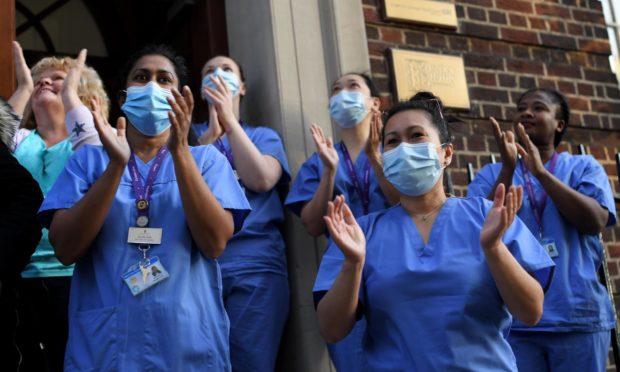The clap for carers is back but here in the north-east there’s something we could do for them which would mean much more. During the first lockdown the children of key workers, up to the age of S2 (or around 13 years old), were able to attend school. This time it is different. My partner is a key worker and last time both of our children went to school full time. This time we filled out the form, only to be told days before they were due to go back that the youngest had been given no place at all and our eldest was only being offered one day a week.
I was told by a primary school head teacher that even her children did not have places at school. How she was supposed to educate other people’s children when her own aren’t allowed in school is anybody’s guess.
The word is that this time around different councils seem to be applying the rules differently and here in Moray only families where both parents are key workers are being allocated school places. The purpose is to stop the spread of a variant of the virus which is more contagious than before. I get that. My job, like many others, depends on the economy getting back to normal as soon as possible and a short sharp lockdown gives us the best chance of that.
It would just have been helpful to have a bit more warning than a couple of days – which were spent scrambling around for a solution when we suddenly discovered we had no school places a few days before the kids were due to go back.
If the children of key workers aren’t in school physically, it is all the more important for them to be in school virtually. There needs to be a timetable of video lessons which follows the normal timetable, allowing one parent to work from home effectively.
One week in, I can see that there have been some improvements but we are still nowhere near the support needed. My 10-year-old son has been given a set of paper handouts to last a couple of weeks. Thank God for BBC Bitesize.
Most (but not all) of my eldest son’s secondary school teachers are posting work every time he would normally have had a lesson. More of them are responding to him when he contacts them. But there are still very few video lessons and few teachers are ensuring he hands anything in. He needs to remember which of three platforms each subject is posted on, plus passwords. This makes it difficult for us to track what is being set and impossible to monitor his progress. I doubt even MI6 code-breakers could hack into Scotland’s national ‘Glow’ online platform for schoolchildren.
If we leave our eldest to it, the outcome will be a disaster. Following the first lockdown he is racing headlong towards leaving school with no qualifications whatsoever.
Much has been said about the online learning gap but it is not as simple as a gap between rich and poor, privileged and unprivileged. Many of the students who are being left to their own devices are the children of key workers.
There is only one option left for us – one of us will have to take unpaid leave or volunteer to be furloughed. Many key workers are in the lowest paid jobs. They are the nurses, support workers and carers who earn little more than the living wage. When it comes to deciding which parent is going to take unpaid leave or volunteer to be furloughed to look after the kids, many households like mine have no choice – the key worker stays at home. It’s the only way we can pay the mortgage.
We are clapping for carers but we need to be doing something much more important for them – make sure their children are educated and looked after. Improvements have been made but the bottom line is that online learning in state schools still isn’t working and this time there’s no excuse – we’ve had a year to figure it out. If the authorities decide to be stricter about who can attend school, then the least they can do is get the online schooling sorted. It’s not just our children who depend upon it, it’s the key workers too.
Eleanor Bradford is a former BBC Scotland health correspondent who now works in communications in the education sector











